“Did you know that you use less than 1% of your brain? The good news is that mind mapping can help you to access the other 99%!”
Tony Buzan, the father of modern mind mapping and author of the book ‘Mind Map Mastery’, said these words.
A mind map takes the form of a diagram with the main idea or subject placed at the center. Related ideas or subtopics then branch out like stems connected to the main idea.
This technique takes advantage of the power of images and visual learning to help you understand and memorize the information you look at on the mind map.
According to Mind Maps Unleashed, mind maps are crucial in helping you organize and understand information faster and better.
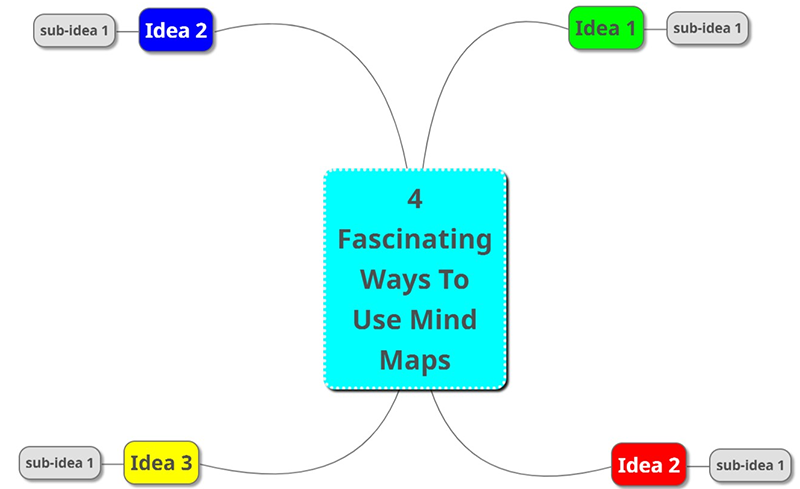
In this article, we’re going to look at steps that you should follow in the process of developing an effective mind map. We will then move on to the 4 unique situations where you can use mind maps to boost your effectiveness as a remote worker.
How To Use Mind Maps
Here’s how to create a strong mind map using a simple pen and paper:
Step 1:
Place your central idea in the center of your map. This will be your main focal point. All other ideas and subtopics will stem from this central idea.
Step 2:
Use a vibrant image for your central point. As mentioned above, images are important for memorizing what you read. Using one for your main topic is vital because this is where every other idea stems from.
Step 3:
Use bright colors. The brain is more active when colors are involved. Creativity increases, and you’re able to form better connections between the points in your mind maps.
Step 4:
Connect your points. The central idea or subject should be the basis of all other branching ideas. The connection should be in this format:
Central idea → 1st subtopic → 2nd subtopic → 3rd subtopic and so on.
Step 5:
Use wavy lines for your connections. The brain is more likely to remember curved lines and connectors than it is to remember straight lines.
Step 6:
Use lots of images in your mind map. You used a big, colorful picture for your central idea. Now continue using images with your connected ideas and subtopics. For example, if the keyword one of your ideas is ‘key,’ add an image for a key.
If the keyword for one of the connected ideas is ‘car,’ include an image for a car. This will highly improve the ability of your brain to remember the points.
Watch this short video to learn how to make a good mind map.
Here’re are the 4 situations in which you can use mind maps to unleash your brain’s potential:
1: Creating Editorial Calendars
(Perfect for remote writers, content managers, ideation managers, and content editors)
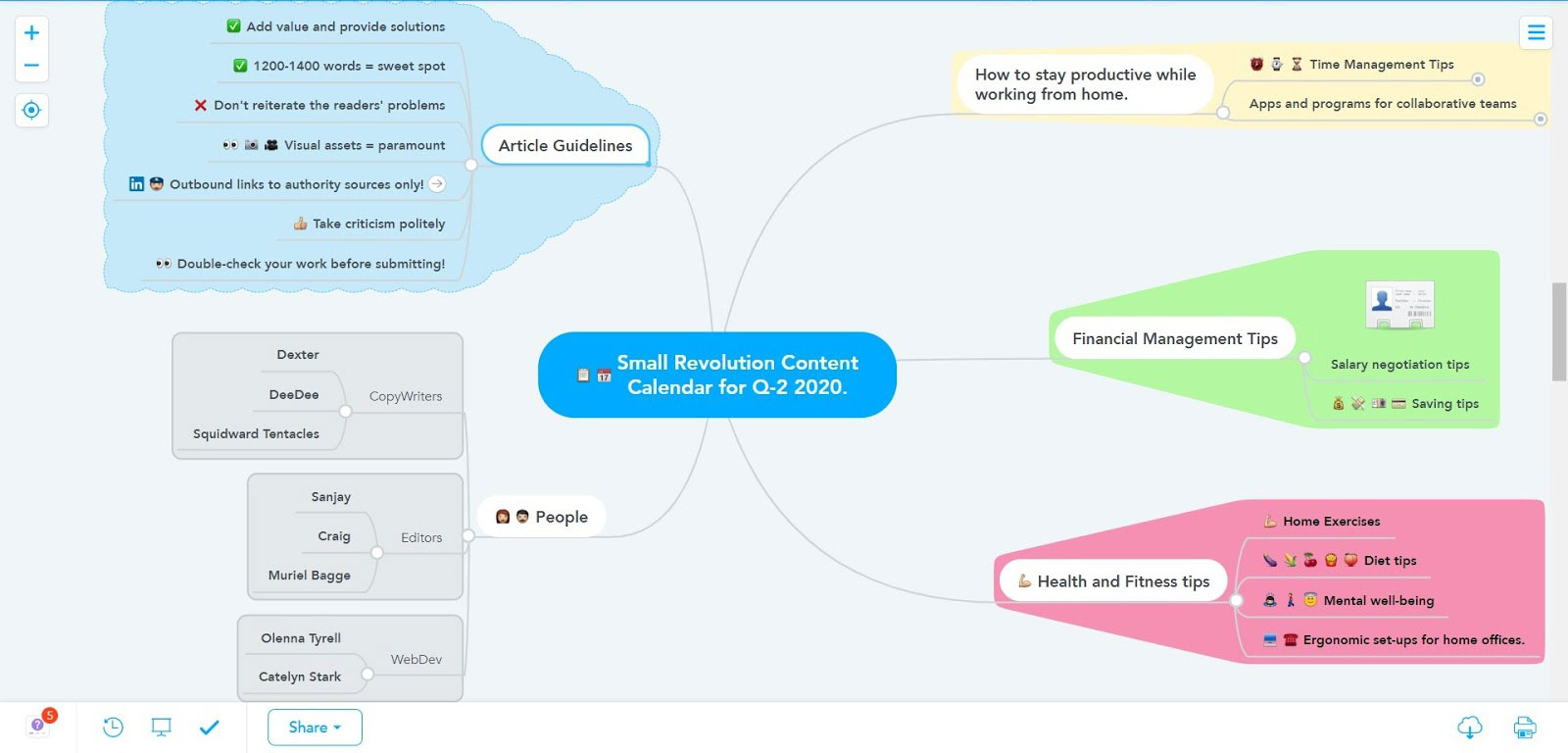
You and your team can come together to brainstorm ideas on what your next few weeks or months of content should consist of.
A mind mapping software will make this easy for everyone. Instead of emails, invite them to collaborate on an online mind map tool.
Place your main topic in the center of the mind map and position your subtopics clockwise beginning at 1 o’clock,
You and your team members can now flesh it out with your content ideas as shown above.
All ideas added onto the mind map are visible in real time to all members of the team.
You can have as many or as few ideas as you want and then shortlist to only remain with the best proposals.
The mind map is easy to read and understand as all sections are separate and colored differently.
Some mind mapping softwares that are good for collaboration and available online as web applications include:
Here’s a video showing you how to use mind maps for content planning.
2: Problem Solving And Troubleshooting
(Perfect for remote software engineers, remote project managers, and virtual assistants)
A proven technique to follow in problem-solving is the 5 Whys + 1 How method. Using a mind map, put your main question or problem at the center, and then draw branches connecting it to the following 6 fundamental questions:
- Why? – outline the causes of your problems or the reasons behind your chosen cause of action.
- Who? – list all the people and entities involved.
- Where? – the relevant locations. For example, if you’re doing a market analysis, outline the locations of most of your customers and your competition.
- When? – state the relevant timelines.
- What? – all the issues, facts, and figures involved.
- How? – this is where you outline your next course of action. You could also briefly analyze how you arrived at your current situation.
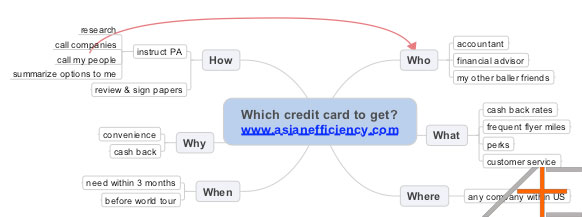
Mind maps guide you through the questions you need to answer in order to arrive at the desired solution to your core problem.
Taking this approach and answering all your questions as you move along will allow you to see the connections and come up with better solutions to your core problem or question.
Here’s a video showing you how to use mind maps to solve problems.
3: Project And Workflow Management
(Perfect for remote project managers, product leads, virtual assistants, remote writers, and remote developers)
Every once in a while, you get tasked with overseeing a big project to fruition.
These projects involve different functions handled by several different people. There might also be a budget for the various functions.
Mind maps give you a simple visual overview of all the different facets of your project. It is easy to study and understand a diagram summarising all the main details and people involved in your project.
To create a project management mind map, have the name of the project in the middle of the diagram. Include a picture and a brief description and ensure it is distinctly colored.
Draw connecting lines branching out to the different functions of your project. Remember, these lines should all be colored differently to emphasize the differences and increase your ability to remember and form connections between all of them.
Some of these branches might be labeled as:
- People involved
- Timescales
- Functions or scope of operations like transport, manufacturing, sales
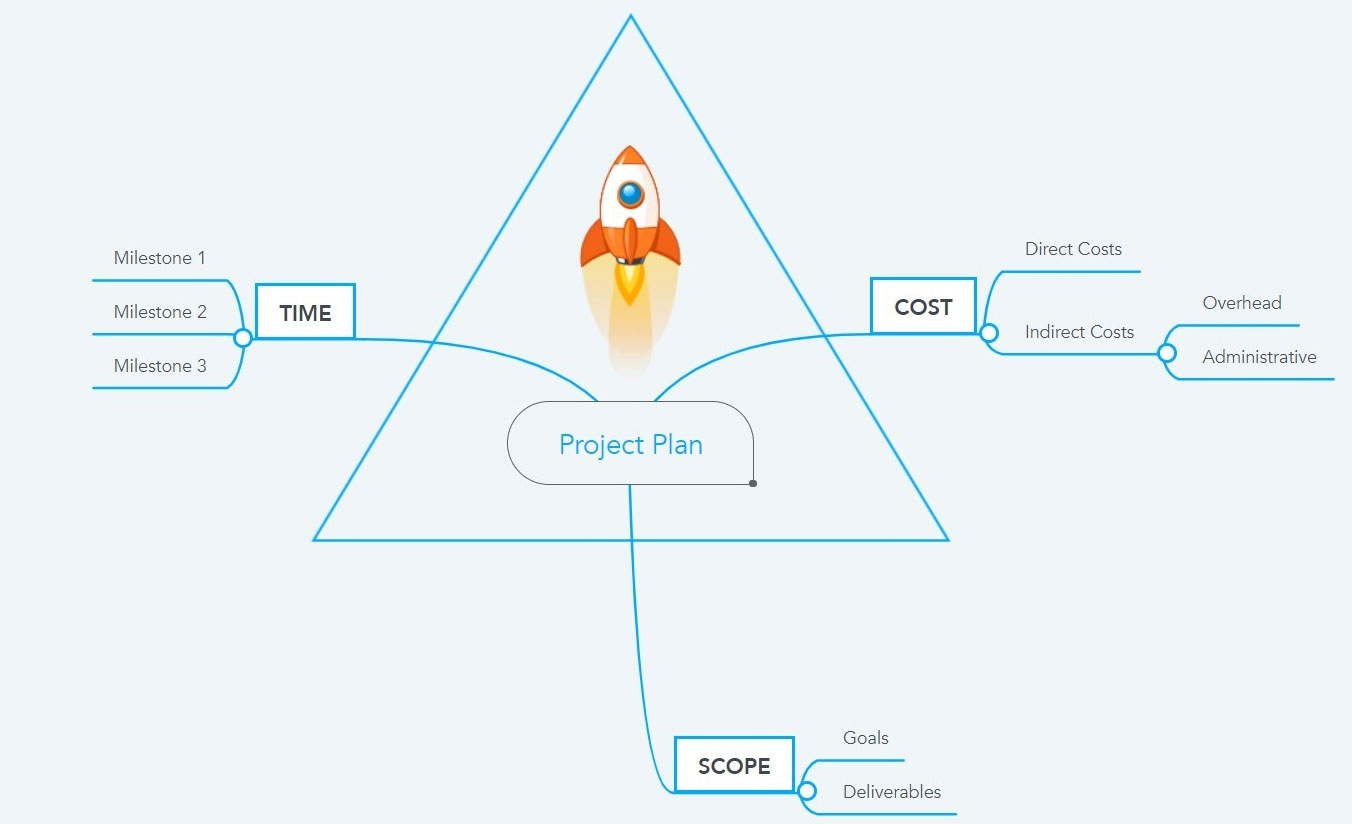
4: Recording Meeting Notes
(Perfect for both virtual and in-person meetings)
Seldom do meetings strictly follow their set agenda. Spur of the moment, discussions and ideas always come up. These unplanned topics sometimes take on a life of their own with independent agendas and to-dos.
If you’re taking notes during these meetings, you end up with a hodgepodge of information.
What happens when you need to refer to this information in a month or two?
Information was coming at you hot and fast, and you were only jotting down bits and pieces.
Now, 2 months later, you don’t remember the details.
Chaos.
A mind-map puts order in your notes. Every bit of information you note down will have a trail linking it to all the relevant sources. These connections will be extremely instrumental in you remembering the details of the discussions that took place during the meeting.
Place the meeting’s agenda name at the center of your diagram. Make the main topic or agenda name as specific as possible.
For example, instead of ‘Accounts Department Meeting,’ use ‘Accounts Department Meeting For Planning Marketing Budget For Product X.’ This is more direct and specific.
As with all our previous mind maps, make sure you use bright, unique colors for all your connective branches and topic names.
The meeting mind map should include the following:
- Attendees. This will then have separate branches listing all the attendees and their contributions to the meeting.
- List of topics. If the meeting agenda had included a list of issues to discuss, draw them as separate branches connected to your central theme.
- To-Dos. This topic will include the responsibilities you were tasked with or the things that you promised to do.
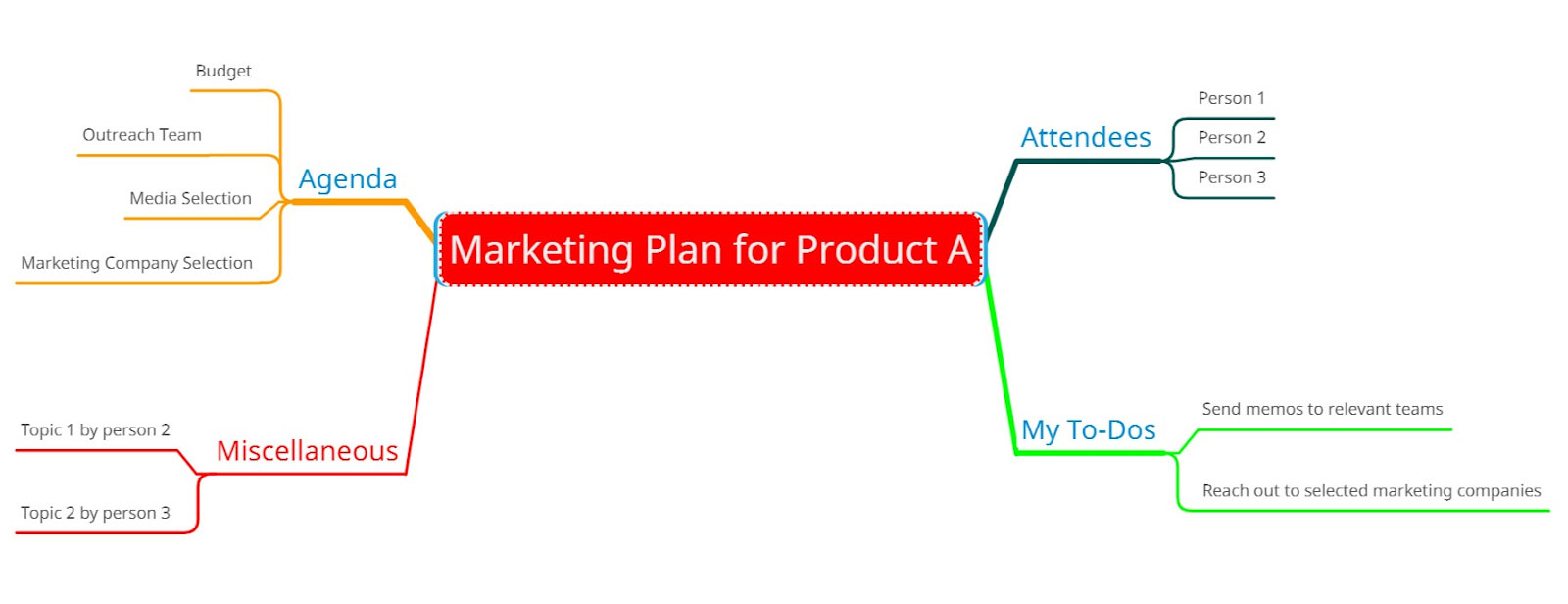
As the meeting develops, make short notes next to the relevant topics listed.
When new topics develop in the course of the meeting, draw new branches with different colors. Make short, relevant notes next to them as with all the other topics.
Taking meeting notes using mind maps is guaranteed to help you remember what you and your team discussed, even if you have to refer to the notes a few months or years later.
To Sum It Up
Mind mapping is an excellent method to boost your information retention capabilities and increase your ability to understand relevant details.
You will have better-organized information, and you will increase your productivity as a result.
To learn more tips and proven methods to help you become more organized in your work and to help you make the best use of your time, take a few minutes to browse these expert articles by Small Revolution.

This 7-minute read article gives you useful pointers to help you regain focus at work when fatigue creeps in. Go ahead and have a read.

